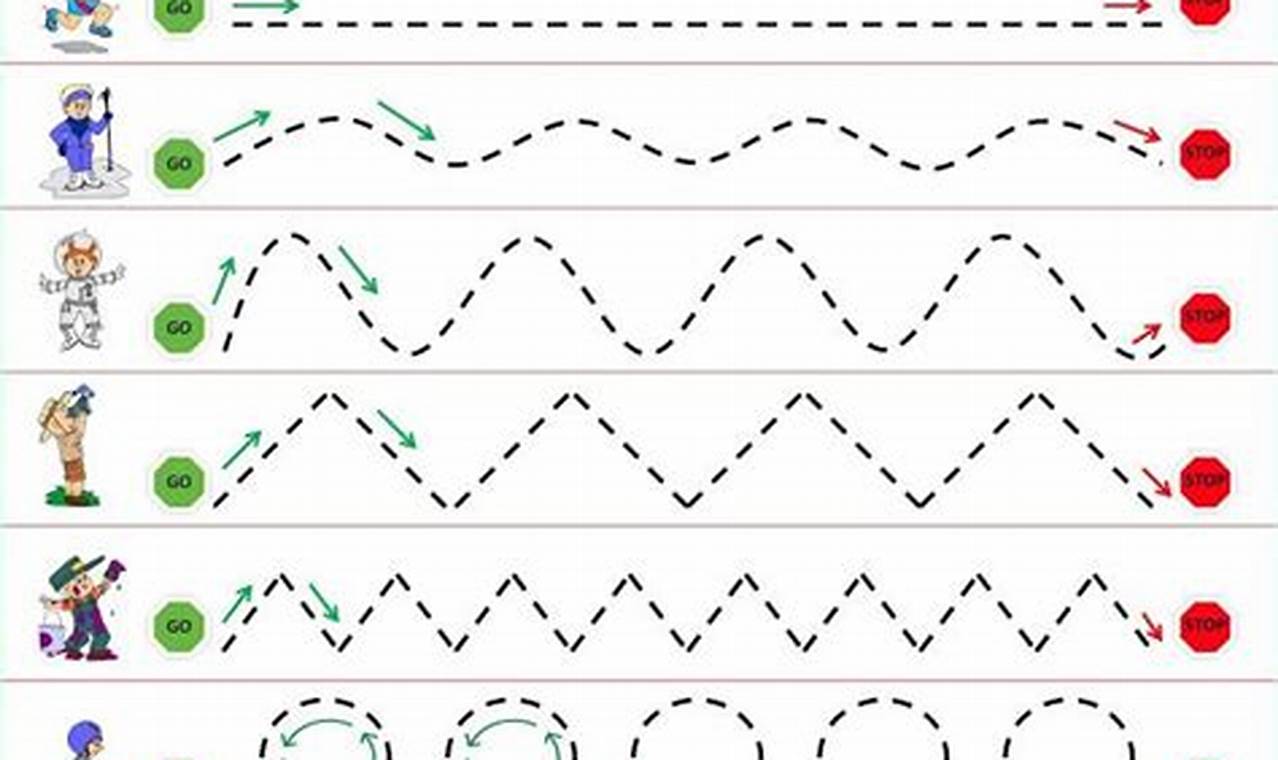The development of visual motor skills is crucial for a child’s early learning journey. These skills, which involve coordinating what the eyes see with what the hands do, are fundamental for tasks ranging from writing and drawing to catching a ball. Engaging activities that promote this coordination can significantly impact a child’s academic and everyday success.
Utilizing a worksheet designed for “tracing activities for visual motor development” offers several key benefits. It enhances fine motor skills, hand-eye coordination, and pre-writing abilities. The structured nature of tracing helps children develop control over their hand movements, improving precision and dexterity. Furthermore, it can assist with letter and number recognition as children trace and become more familiar with their forms.
This particular worksheet features a variety of tracing exercises designed to cater to different skill levels. It includes a selection of straight, curved, and zig-zag lines, as well as basic shapes such as circles, squares, and triangles. The bold lines provide a clear guide for children to follow, and the inclusion of playful illustrations adds an element of fun to keep them engaged. Ample space is provided for practice, allowing children to repeat each tracing activity multiple times.
To maximize the effectiveness of this worksheet, begin by providing a comfortable and supportive environment. Ensure the child has a stable surface to work on and a properly sized writing tool, such as a thick pencil or crayon, which is easier for small hands to grip. Guide the child to start each tracing activity at the designated point and follow the lines carefully. Encourage a slow and deliberate pace, focusing on accuracy rather than speed. Break the tasks into smaller sections if the child becomes fatigued or loses focus.
To further enhance visual motor skills, complement the worksheet with other related activities. Explore additional tracing worksheets available on Kidtraces.com that focus on letters, numbers, and complex patterns. Engage in activities like drawing, coloring, puzzles, and building with blocks. These activities help reinforce the skills learned through tracing and contribute to overall motor development. Reading aloud and engaging in conversations about the images traced can further enhance cognitive development.
In conclusion, the “tracing activities for visual motor development” worksheet offers a structured and engaging way to support a child’s early learning. Its focus on fine motor skills and hand-eye coordination lays a strong foundation for future academic success. Download the worksheet today and witness the positive impact it has on a child’s development. Explore more free, educational worksheets on Kidtraces.com to support continuous learning and skill development.
